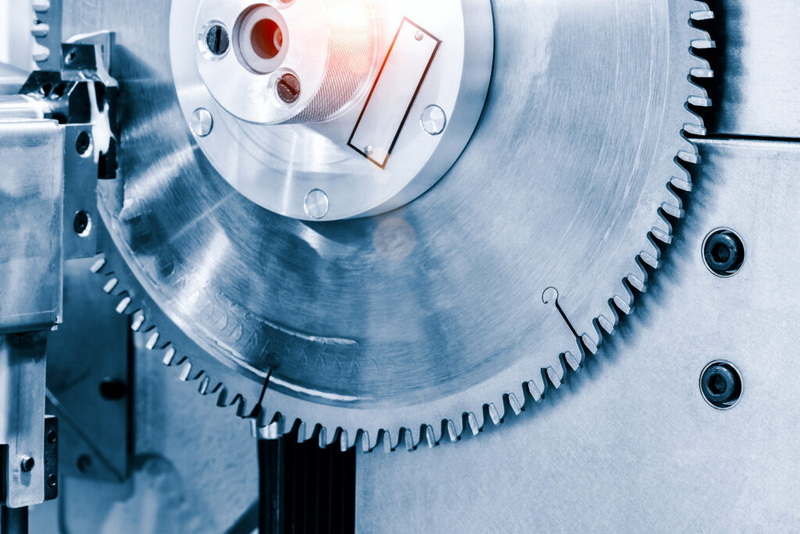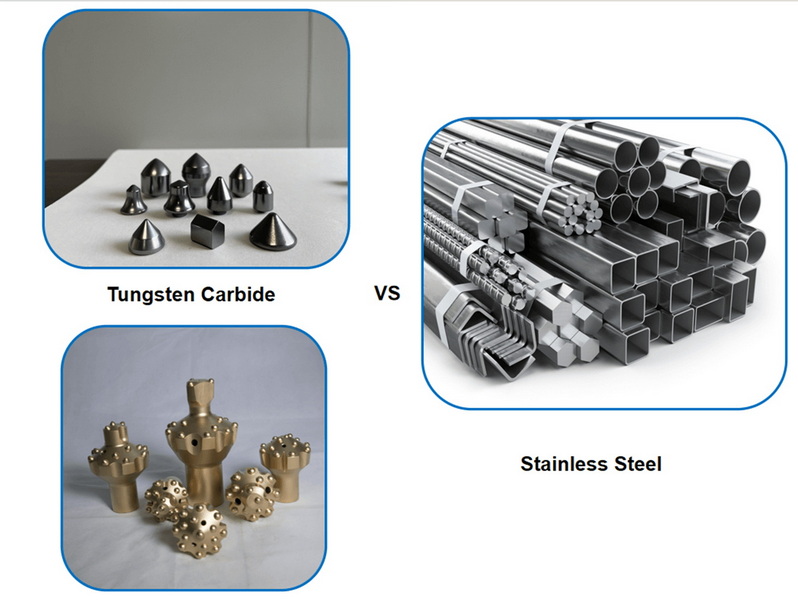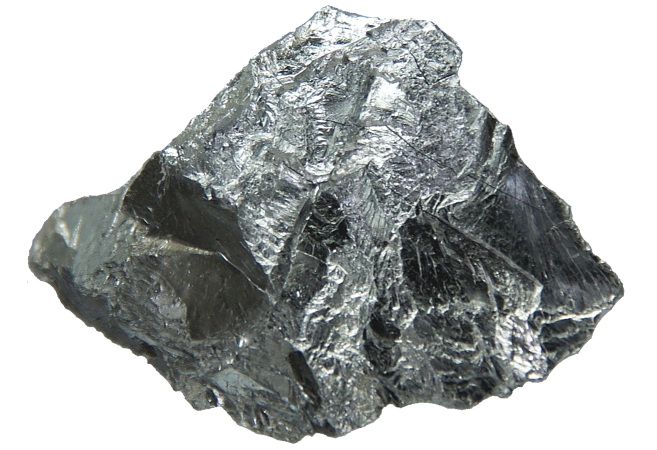Content Menu
● Introduction to Tungsten Carbide
● Introduction to Stainless Steel
● Comparison of Tungsten Carbide and Stainless Steel
>> Hardness and Wear Resistance
>> Corrosion Resistance
>> Cost and Versatility
● Is Tungsten Carbide a Type of Stainless Steel?
● Applications of Tungsten Carbide and Stainless Steel
>> Tungsten Carbide Applications
>> Stainless Steel Applications
● Detailed Comparison of Applications
>> Industrial Applications
>> Consumer Products
>> Environmental Impact
● Manufacturing Processes
>> Tungsten Carbide Manufacturing
>> Stainless Steel Manufacturing
● Corrosion Resistance Mechanisms
● Conclusion
● FAQs
>> 1. What is the primary difference between tungsten carbide and stainless steel?
>> 2. Is tungsten carbide more expensive than stainless steel?
>> 3. What are the common applications of tungsten carbide?
>> 4. Can stainless steel be used in high-wear applications?
>> 5. Is tungsten carbide recyclable?
● Citations:
Tungsten carbide and stainless steel are two distinct materials with unique properties, applications, and compositions. While both are used in various industrial and consumer products, they serve different purposes due to their inherent characteristics. This article aims to clarify the differences and similarities between tungsten carbide and stainless steel, addressing whether tungsten carbide can be considered a type of stainless steel.

Introduction to Tungsten Carbide
Tungsten carbide is a chemical compound composed of equal parts tungsten and carbon atoms, known for its exceptional hardness and wear resistance. It is often used in cutting tools, abrasives, and high-wear applications due to its ability to maintain sharpness under extreme conditions. Tungsten carbide is typically produced through a powder metallurgy process, where tungsten carbide powder is mixed with a binder metal, such as cobalt, and then sintered at high temperatures to form a solid composite.
Tungsten Carbide Properties:
- Hardness: Tungsten carbide has a Mohs hardness rating of about 9 to 9.5, comparable to diamond.
- Density: It is twice as dense as steel.
- Melting Point: Tungsten carbide has a high melting point of approximately 2,870°C.
- Applications: Commonly used in cutting tools, jewelry, and wear-resistant components.
Introduction to Stainless Steel
Stainless steel is an iron-based alloy that contains a minimum of 10.5% chromium, which provides its corrosion-resistant properties. It is widely used in construction, automotive, medical equipment, and consumer products due to its strength, durability, and aesthetic appeal. Stainless steel can be alloyed with elements like nickel, molybdenum, and nitrogen to enhance its performance for specific applications.
Stainless Steel Properties:
- Corrosion Resistance: Offers excellent resistance to corrosion due to its chromium content.
- Strength: Can be strengthened through cold working or heat treatment.
- Applications: Commonly used in cookware, cutlery, surgical instruments, and architectural features.
Comparison of Tungsten Carbide and Stainless Steel
Hardness and Wear Resistance
Tungsten carbide significantly outperforms stainless steel in terms of hardness and wear resistance. Its exceptional hardness makes it ideal for cutting tools and high-wear applications, whereas stainless steel is more suitable for environments requiring corrosion resistance.
Corrosion Resistance
Stainless steel excels in corrosion resistance due to its chromium content, making it suitable for applications in harsh environments. Tungsten carbide, while resistant to many chemicals, lacks the same level of corrosion resistance as stainless steel.
Cost and Versatility
Stainless steel is generally less expensive and more versatile than tungsten carbide, with a wide range of grades available for different applications. Tungsten carbide, though more expensive, offers superior hardness and durability.
Is Tungsten Carbide a Type of Stainless Steel?
No, tungsten carbide is not a type of stainless steel. While both materials are used in industrial applications, they have distinct compositions and properties. Tungsten carbide is a carbide compound known for its hardness, whereas stainless steel is an iron-based alloy renowned for its corrosion resistance.

Applications of Tungsten Carbide and Stainless Steel
Tungsten Carbide Applications
- Cutting Tools: Due to its high hardness, tungsten carbide is ideal for cutting tools that require maintaining sharpness under high stress.
- Jewelry: Tungsten carbide rings are popular for their durability and resistance to scratches.
- Abrasive Materials: Used in grinding and polishing due to its wear resistance.
Stainless Steel Applications
- Cookware and Cutlery: Stainless steel's corrosion resistance makes it ideal for kitchen utensils.
- Medical Instruments: Used in surgical tools due to its cleanability and resistance to corrosion.
- Construction: Commonly used in building frames and architectural features.
Detailed Comparison of Applications
Industrial Applications
Both materials are used in industrial settings, but for different purposes. Tungsten carbide is preferred in environments where high wear resistance is crucial, such as in mining and drilling equipment. Stainless steel, on the other hand, is used in applications requiring corrosion resistance, such as in chemical processing and marine hardware.
Consumer Products
In consumer products, stainless steel is more prevalent due to its aesthetic appeal and durability. It is commonly found in kitchen appliances, cookware, and cutlery. Tungsten carbide, however, is gaining popularity in jewelry due to its scratch resistance and modern look.
Environmental Impact
Tungsten carbide and stainless steel have different environmental impacts. Tungsten carbide is often associated with concerns over tungsten mining practices, while stainless steel is generally more recyclable and has a lower environmental footprint in terms of production.
Manufacturing Processes
Tungsten Carbide Manufacturing
The manufacturing process for tungsten carbide involves powder metallurgy. Tungsten carbide powder is mixed with a binder metal, such as cobalt, and then sintered at high temperatures to form a solid composite. This process allows for the creation of complex shapes and structures with high precision.
Stainless Steel Manufacturing
Stainless steel is produced through a melting and casting process. Iron, chromium, and other alloying elements are melted together in an electric arc furnace. The molten metal is then cast into slabs, which are further processed through rolling and annealing to achieve the desired properties.
Corrosion Resistance Mechanisms
Stainless steel's corrosion resistance is primarily due to its chromium content, which forms a protective oxide layer on the surface. This layer prevents further oxidation and protects the underlying metal from corrosion. In contrast, tungsten carbide does not rely on a similar oxide layer for corrosion resistance but is generally resistant to many chemicals due to its hardness and density.
Conclusion
In conclusion, tungsten carbide and stainless steel are distinct materials with different properties and applications. Tungsten carbide is renowned for its hardness and wear resistance, making it suitable for cutting tools and high-wear applications. Stainless steel, on the other hand, offers excellent corrosion resistance and versatility, making it ideal for a wide range of industries. While both materials are valuable in their respective fields, tungsten carbide is not a type of stainless steel.

FAQs
1. What is the primary difference between tungsten carbide and stainless steel?
Answer: The primary difference lies in their hardness and corrosion resistance. Tungsten carbide is much harder and more wear-resistant, while stainless steel offers superior corrosion resistance.
2. Is tungsten carbide more expensive than stainless steel?
Answer: Yes, tungsten carbide is generally more expensive than stainless steel due to its superior hardness and durability.
3. What are the common applications of tungsten carbide?
Answer: Tungsten carbide is commonly used in cutting tools, jewelry, and abrasive materials due to its exceptional hardness.
4. Can stainless steel be used in high-wear applications?
Answer: While stainless steel can be used in some wear-resistant applications, it is not as effective as tungsten carbide in high-wear environments due to its lower hardness.
5. Is tungsten carbide recyclable?
Answer: Yes, tungsten carbide can be recycled. Worn-out tools and scrap material can be reclaimed and reused, reducing waste and conserving resources.
Citations:
[1] https://en.wikipedia.org/wiki/Tungsten_carbide
[2] https://www.vedantu.com/chemistry/tungsten-carbide
[3] https://en.wikipedia.org/wiki/Stainless_steel
[4] https://www.neonickel.com/technical-resources/what-is-stainless-steel-what-is-it-used-for
[5] https://www.reekecarbide.com/tungsten-carbide/tungsten-carbide-and-stainless-steel-a-comparison-of-strengths-and-suitability.html
[6] https://www.carbide-part.com/blog/a-comprehensive-analysis-of-the-differences-between-tungsten-carbide-tools-and-stainless-steel-tools/
[7] https://shop.machinemfg.com/tungsten-vs-stainless-steel-whats-the-difference/
[8] https://www.retopz.com/57-frequently-asked-questions-faqs-about-tungsten-carbide/
[9] https://monroeengineering.com/blog/7-facts-about-stainless-steel/
[10] https://www.britannica.com/science/tungsten-carbide
[11] https://thecraftarmoury.com.au/pages/faqs
[12] https://www.linkedin.com/pulse/characteristics-tungsten-carbide-zzbettercarbide
[13] https://www.azom.com/article.aspx?ArticleID=4827
[14] https://consolidatedresources.com/blog/10-facts-about-tungsten-carbide/
[15] https://pubchem.ncbi.nlm.nih.gov/compound/Tungsten-carbide
[16] https://www.imetra.com/tungsten-carbide-material-properties/
[17] https://www.dymetalloys.co.uk/wp-content/uploads/2024/01/Tungsten-carbide-1.png?sa=X&ved=2ahUKEwi979HF_r2MAxVyS2cHHapBLdUQ_B16BAgHEAI
[18] https://www.azom.com/properties.aspx?ArticleID=1203
[19] https://www.carbideprobes.com/wp-content/uploads/2019/07/TungstenCarbideDataSheet.pdf
[20] https://www.dymetalloys.co.uk/what-is-tungsten-carbide
[21] https://www.britannica.com/science/tungsten-chemical-element
[22] https://www.jindalstainless.com/blog/properties-of-stainless-steel-explained/
[23] https://www.azom.com/article.aspx?ArticleID=2874
[24] https://www.unifiedalloys.com/blog/what-is-stainless-steel
[25] https://eagletube.com/wp-content/uploads/2015/07/Depositphotos_18849747_s-20151.jpg?sa=X&ved=2ahUKEwjlr5PH_r2MAxW7k1YBHWjCEd4Q_B16BAgBEAI
[26] https://www.thyssenkrupp-materials.co.uk/properties-of-stainless-steel
[27] https://www.thermofisher.com/blog/metals/what-is-stainless-steel-part-i/
[28] https://alroys.com/stainless-steel-grades-and-applications/
[29] https://www.britannica.com/technology/stainless-steel
[30] https://www.metals4u.co.uk/blog/304-stainless-steel
[31] https://eagletube.com/about-us/news/stainless-steel-characteristics/
[32] https://nickelinstitute.org/en/nickel-applications/stainless-steel
[33] https://www.metaltek.com/blog/304-vs-316-stainless-steel-which-one-is-better/
[34] https://intellirings.com/tungsten-vs-stainless-steel/
[35] https://newmanbands.com/tungsten-vs-steel-rings/
[36] https://industrialmetalservice.com/wp-content/uploads/2021/10/Differentiating-Tungsten-Carbide-vs.-Steel-and-Other-Tooling.jpg?sa=X&ved=2ahUKEwjSjcvJ_r2MAxVzaPUHHbiqMbMQ_B16BAgFEAI
[37] https://brite.co/blog/tungsten-vs-stainless-steel/
[38] https://www.reddit.com/r/AskReddit/comments/ag6ukl/what_are_the_differences_between_stainless_steel/
[39] https://www.wpiinc.com/blog/post/Why-Tungsten-Carbide-Surgical-Instruments-are-Preferred
[40] https://stock.adobe.com/search?k=tungsten+carbide
[41] https://www.istockphoto.com/photos/tungsten-carbide
[42] https://industrialmetalservice.com/metal-university/differentiating-tungsten-carbide-vs-steel-and-other-tooling/
[43] https://www.shutterstock.com/search/tungsten
[44] https://www.saddleridermusic.com/blog/carbide-vs-stainless-steel-vs-heat-treated-endpin-tips
[45] https://stock.adobe.com/search?k=carbide
[46] https://periodictable.com/Elements/074/pictures.html
[47] https://stock.adobe.com/search?k=%22stainless+steel%22
[48] https://www.istockphoto.com/photos/tungsten-carbide-drill-bits
[49] https://www.shutterstock.com/search/stainless-steel
[50] https://www.tungco.com/insights/blog/frequently-asked-questions-used-tungsten-carbide-inserts/
[51] https://specialpipingmaterials.com/en/questions-and-answers-on-stainless-steel/
[52] http://www.carbidetechnologies.com/faqs/
[53] https://eagletube.com/resources/faq/
[54] https://tuncomfg.com/about/faq/
[55] https://blog.boydmetals.com/5-frequently-asked-questions-about-stainless-steel
[56] https://eternaltools.com/blogs/tutorials/tungsten-carbide-an-informative-guide
[57] https://mpelimited.co.uk/our-work/faqs
[58] https://www.linde-amt.com/resource-library/articles/tungsten-carbide-powder
[59] https://www.allied-material.co.jp/en/techinfo/tungsten_carbide/features.html
[60] https://www.linde-amt.com/resource-library/articles/tungsten-carbide
[61] https://carbideprocessors.com/pages/carbide-parts/tungsten-carbide-properties.html
[62] https://www.linkedin.com/pulse/stainless-steel-types-characteristics-yuki-wang-ktise
[63] https://fractory.com/what-is-stainless-steel/
[64] https://www.worldstainless.org/about-stainless/what-are-stainless-steels/introduction-to-stainless-steels/
[65] https://metalscut4u.com/blog/post/316-stainless-steel-properties.html
[66] https://www.jindalstainless.com/blog/a-complete-guide-to-stainless-steel-compositions/
[67] https://www.jindalstainless.com/blog/what-is-stainless-steel-their-key-benefits-2/
[68] https://www.manufacturingtomorrow.com/news/2023/03/26/difference-between-tungsten-steel-and-stainless-steel/20331/
[69] https://www.makeitfrom.com/compare/AISI-316L-S31603-Stainless-Steel/Tungsten-Carbide-WC
[70] https://www.makeitfrom.com/compare/AISI-304-S30400-Stainless-Steel/Tungsten-Carbide-WC
[71] https://www.istockphoto.com/photos/brushed-stainless-steel
[72] https://www.freepik.com/free-photos-vectors/stainless-steel
[73] https://www.istockphoto.com/photos/stainless-steel
[74] https://pixabay.com/images/search/stainless%20steel/
[75] https://unsplash.com/s/photos/stainless-steel
[76] https://www.s3i.co.uk/stainless-steel.php
















